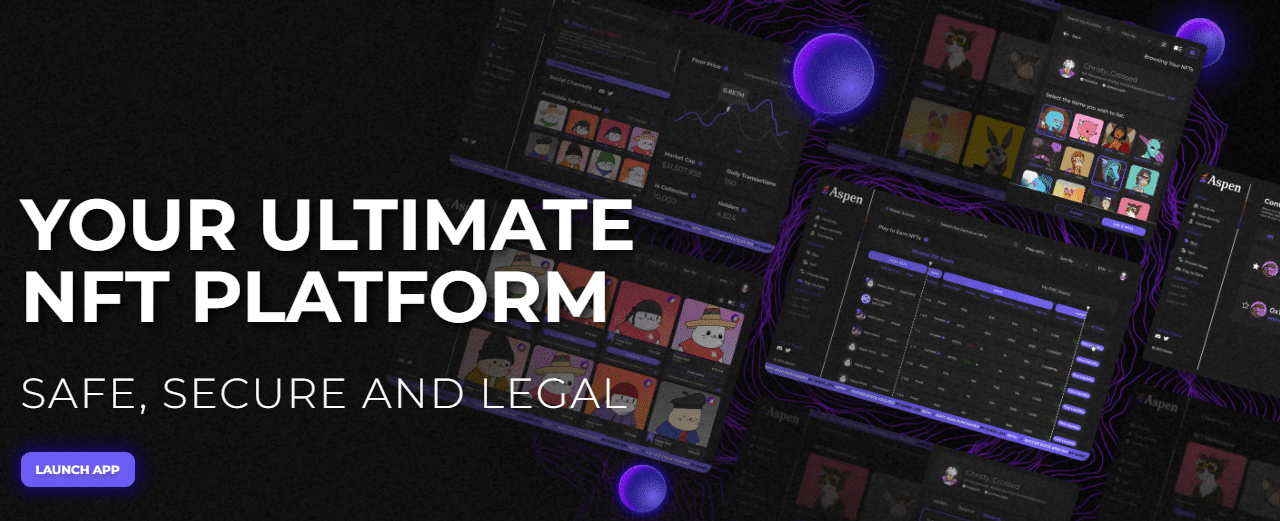What Is Aspen (ASPEN)?
The Aspen platform includes a utility token they call (creatively). The token provides the community using the platform with a reason to use and evolve the platform. The idea of is modeled upon loyalty programs across other industries. For example, in the travel industry, the accumulation of airline ‘miles’ leads to the desire to continue using that airline or in the hospitality industry, where similar mechanisms exist. This is why, from time to time, they will also refer as a ‘loyalty’ token.
The token is an ERC-20 token deployed initially on Ethereum. It is a fixed supply token with 100 million tokens generated upon the deployment of the smart contracts controlling the token. When rolled the token, there were 100 million tokens, so there will only ever be 100 million tokens going forward. The token is a zero-fee or taxes token at this time, as no taxes are needed or taken upon the transfer of the token. They are not reflecting.
Aspen Storage Key Points
| Coin Basic | Information |
|---|---|
| Coin Name | Aspen |
| Short Name | ASPEN |
| Circulating Supply | 100,000,000.00 ASPEN |
| Total Supply | 100,000,000 |
| Source Code | Click Here To View Source Code |
| Explorers | Click Here To View Explorers |
| Twitter Page | Click Here To Visit Twitter Group |
| Whitepaper | Click Here To View |
| Support | 24/7 |
| Official Project Website | Click Here To Visit Project Website |
Utility
There are four areas in which provides value to the Aspen community of users. This value will undoubtedly evolve alongside the platform’s evolution. The first area of utility is to gain an advantage on fees. Simply put, the more tokens a user holds in their wallet, the lower their transaction and – when available – publishing fees will be. While cannot, at this time, commit to exactly what those fee structures will be forever, they can assure the community that the advantage of getting into the highest tier (more on your tier framework below) will be substantial.
Features
The second area of utility is around the use of specific features. Said another way, they believe every feature within the platform has a relative value, so they will provide tokens to ensure that your community realizes that value. Notably, users do not have to purchase tokens to use core features. However, when they use the platform, they will receive them.
The relative value of every feature will change over time, so the reward per feature will also change. The system of record for information regarding the ratio of rewards-to-features will always be visible within Aspen itself.
Framework
The token borrows from best-in-class loyalty program frameworks. As such, there are four tiers available Common, Rare, Epic, and Legendary. Each tier has a threshold of tokens needed to be held within a user’s wallet. This means actually in the wallet — not simply claimable as discussed below. They snapshot a user’s wallet when the user takes action to determine what amount of tokens they will add to their claimable balance.
$ASPEN Claims
The token is built as an on-chain ERC-20 token that will allow it to be interoperable with the wonderfully broad ecosystem of tooling that supports ERC-20 tokens on the Ethereum mainnet. But to provide a cost-effective way of administering the rewards, they have implemented a claiming mechanism directly into Aspen.
The way this works is straightforward. As you use various features – for which rewards are attributable – your claim balance increases. This balance will only be viewable from within the platform; it is not viewable from the blockchain, wallet, or 3rd party data service at this time.
When users feel it is cost-effective to claim their rewards, they can visit to claim their loyalty rewards. Claiming rewards is an on-chain activity that will cost gas just as any other blockchain transaction would. The result of this activity is that users will then have the loyalty rewards tokens added to their wallets.






